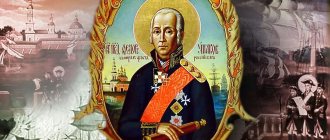Among the Byzantine rulers, one of the most extraordinary personalities is Theodora, the wife of Emperor Justinian. It is perhaps difficult to find a monarch whose information from the authors varied as much as in the descriptions of Theodora. Some considered her a fallen woman, while other contemporaries spoke of her as a repentant sinner, a true Christian who chose a righteous life.
Be that as it may, the facts speak for themselves: Theodora was canonized by the Christian Church. And although history has preserved more legends than reliable facts about Theodora, her biography is worth getting acquainted with. It is she who will help to understand what the Byzantine empress really was like.
Difficult childhood
Theodora was born around 500 in Cyprus (historians do not have exact information about the place and date of birth of this woman). Her father was a servant of the Constantinople circus. Theodora's family came to the capital of Byzantium when the girl was still very young.
But as soon as the family managed to settle in Constantinople, trouble happened to Theodora’s father - he was wounded by a circus bear. The man died, leaving his wife and daughters without a breadwinner. To find a livelihood, the girls began performing in the circus arena. The records of Procopius of Caesarea read:
“Comito (Theodora’s sister) already shone among her heterosexual peers; Theodora, who followed her, dressed in a chiton with sleeves, as befits a slave maid, accompanied her... But as soon as she grew up and matured, she settled down at the stage and immediately became a hetaera of those that in ancient times were called “infantry.” She... sold her youthful beauty...".
It is easy to notice that already in this excerpt of the notes of Theodora’s contemporary one can feel the condemnation of her behavior in her youth. However, Procopius of Caesarea admits that this woman was unusually smart, she knew how to maintain a conversation on any topic, which delighted many. Other authors spoke differently about her. For example, Demetrius of Rostov delicately calls her a repentant sinner, but John of Ephesus rudely calls her “Theodora from the brothel.”
Jean-Joseph Benjamin-Constant "Empress Theodora in the Circus Box"
Content
- 1 Biography 1.1 Origin
- 1.2 Marriage
- 1.3 Political and religious activities 1.3.1 Participation in the administration of the empire
- 1.3.2 Nick's Rebellion
- 1.3.3 Charitable activities
- 1.3.4 Religious activities
By the will of feelings
Young Theodora fell madly in love with Hekebol, who was appointed archon of one of the regions of North Africa. For the sake of her lover, she left Constantinople and went to foreign lands. But Hekebol soon got tired of the woman, and Theodora, left by him, returned to her previous “occupation” in order to find funds for the journey home. It was upon her return to Constantinople that Theodora met Emperor Justinian.
It is difficult to say how the first meeting of these people, belonging to such different classes, took place. According to one version, Theodora lived with her friend, the actress Macedonia. When Justinian visited her, he saw in front of him a beauty who had arrived from Alexandria. Theodora immediately struck the emperor with her appearance, and her wit and cheerful character helped to completely charm the ruler.
By the way, at that time, as some contemporaries note, Theodora led a completely righteous and modest life - she was engaged in handicrafts, spinning wool, which is how she earned her living.
The image of Empress Theodora as imagined by a modern artist / © D*H / deviantart.com/xxdhxx
Byzantine Empress Theodora / © Nicole Abramczuk / krasnapolka.artstation.com
Marriage to the heir to the throne
When Theodora was about 20 years old, she followed her lover to Egypt, to Alexandria. Soon her lover left her, and she was forced to earn her living on her own.
In Alexandria, Theodora came under the beneficial influence of an enlightened environment, since at that time this city was a major scientific and cultural center of its time and became acquainted with Monophysitism, which she would later patronize.
Here Theodora met the patriarchs Sevier of Antioch and Timothy IV of Alexandria, who liked to address women in their sermons. Perhaps it was they who contributed to changes in the lifestyle of the future empress.
Returning to Constantinople, Theodora stops acting and makes her living through needlework. Theodora loved to do her craft while sitting by the window. According to one version, one day Justinian saw her in the window doing needlework, and immediately lost his head at how beautiful this girl was...
Justinian's love was so passionate that he wanted to marry the former hetaera. To do this, he asked his uncle (then emperor) to assign Theodora the rank of patrician, but this aroused the strong anger of the emperor's wife. So the lovers could not formalize their relationship until 524, when Justinian's aunt died.
After the death of the empress, a new law “On Marriage” was adopted, which allowed a person who had reached the rank of senator to marry a woman of low birth or an actress. Now marriage was possible with the personal permission of the emperor, provided that the woman abandoned her past profession. Theodora and Justinian were married in 525.
In 527, Justinian's uncle dies, and Theodora's husband ascends to the Byzantine throne, and Theodora becomes empress.
Notes
- https://www.enciclopediadelledonne.it/biografie/teodora-imperatrice-di-bisanzio
- Lubker F.
Iustinianus //
Real Dictionary of Classical Antiquities according to Lubker
/ ed. F. F. Zelinsky, A. I. Georgievsky, M. S. Kutorga, F. Gelbke, P. V. Nikitin, V. A. Kansky, trans. A. D. Weisman, F. Gelbke, L. A. Georgievsky, A. I. Davidenkov, V. A. Kansky, P. V. Nikitin, I. A. Smirnov, E. A. Vert, O. Yu. Klemenchich, N.V. Rubinsky - St. Petersburg: Society of Classical Philology and Pedagogy, 1885. - P. 707-708. - J.Br.
Theodora (English) //
Encyclopædia Britannica
:
a dictionary of arts, sciences, literature and general information
/ H. Chisholm - 11 - New York, Cambridge, England: University Press, 1911. - Vol. 26. - P. 761-762. - Iv.
Gr. Theodora //
Encyclopedic Dictionary
- St. Petersburg: Brockhaus - Efron, 1904. - T. XLIa. - pp. 894-895. - Theodora's year of birth is unknown. Procopius reported that approximately in the 2nd half of the reign (“when Anastasius was still ruling the state”) of Emperor Anastasius (491-518), Theodora should have been no more than 5 years old, from which historians take the date of her birth to be about 500.
- The information comes from Patriarch Nikephoros (IX century) [ source not specified 528 days
] - ↑ 1 2 3 4 5 6 7 8 9 10 11 Dil
Sh.
Byzantine portraits
. Part I. Chapter III. Theodora - ↑ 1 2 3 4 5 6 7 8 9 10 11 12
Procopius of Caesarea
. Secret History - Charles Diehl points out that a more complete portrait of the queen can be written in the “Lives of the Eastern Saints” and “Ecclesiastical History” of John of Ephesus, an anonymous chronicle passed off as the work of Zechariah of Mytilene, the lives of Patriarch Severus and Jacob Baradeus (Diehl Sh. Byzantine portraits
. Part I. Chapter III . Theodora) - Memory of the Righteous King Justinian and Queen Theodora
- Although the text of the Lives of the Eastern Saints is written in Syriac, the phrase “ Theodora of the brothel
” is rendered in Greek, which reflects not so much the opinion of John of Ephesus as his sources from Constantinople [
source unspecified 528 days
]. - James Allan Evans, The Empress Theodora: Partner of Justinian, University of Texas Press, 2003, p. 19; ISBN 978-0-292-70270-7
- ↑ 12345678910
Kartashev A. V. Ecumenical Councils - ↑ 1 2 Theodora - a gift to Justinian
// Around the world.
2007 No. 10. (unspecified)
(inaccessible link). Retrieved November 18, 2007. Archived November 3, 2007. - James Allan Evans, The Empress Theodora: Partner of Justinian, University of Texas Press, 2003, p. 20; ISBN 978-0-292-70270-7
- Procopius of Caesarea. Secret history. IX:47
- ↑ 1 2 3
James Allan Evans.
Theodora (Wife of Justinian I)
/ An Online Encyclopedia of Roman Emperors - Justinian I the Great, Flavius Peter Savvatius (Article from TSB) (unspecified)
. Retrieved September 6, 2002. Archived September 6, 2002. - ↑ 123
John Malala, "Chronography". Book XVIII - Collection History of Byzantium
.
T. 1 // Academician Skazkin S. D. (chief editor) - Moscow: Science, 1967 (unspecified)
(inaccessible link). Retrieved November 20, 2007. Archived November 7, 2007. - Diehl's information comes from the mention of the daughter Theodora by John of Ephesus.
- Chronography of Theophanes, year 6025 / 525 (532)
- ↑ 1 2 3
John of Ephesus
Church history
. Book 4 - Theodora // Dashkov S. B. “Emperors of Byzantium.” — Ed. house "Red Square", "APS-books", 1997
- John Malala reports: “ Basileus commanded that those who were caught in pederasty should have their penis cut off, and at that time many were found engaging in sodomy.
And then fear arose among those suffering from this evil ": John Malala
Chronography - Dil S. History of the Byzantine Empire
(chapter “Justinian’s Foreign Policy”)
(unspecified)
(inaccessible link). Access date: December 18, 2007. Archived February 3, 2014. - ↑ 1 2
John Meyendorff
Unity of the Empire and Division of Christians
. Chapter VII. Age of Justinian - Procopius of Caesarea, "War with the Persians"
- Herodotus, 8.68
- ↑ 1234
Chekalova A. A. Procopius of Caesarea: personality and creativity // Procopius of Caesarea. War with the Persians. War against vandals. Secret history. M.: Nauka, 1993. pp. 422-435 - Posnov M. E. History of the Christian Church
- ↑ 1 2
Dvorkin A.L.
Essays on the history of the Ecumenical Orthodox Church
. Chapter XXI. The era of Emperor Justinian - Dil S. History of the Byzantine Empire
(chapter “Character, politics and environment of Justinian”)
(unspecified)
(inaccessible link). Retrieved November 21, 2007. Archived February 3, 2014. - Victor Tonnensky. Chronicle of Victor (Translation by Surovenkova D., 2009) (unspecified)
. Eastern literature. Access date: February 18, 2011. - Gudzik K. Justinian - mentor of bishops
- Kirakos Gandzaketsi. Short story
- Holy Orthodox King Justinian and Queen Theodora
- ↑ 1 2 Uspensky F.I.
History of the Byzantine Empire. - T. 1. - Salti S., Venturini R.
The life of Theodora. - Ravenna, 1999. - ISBN 88-87747-05-9. - Smalt mosaics in the Church of San Vitale in Ravenna, 6th century. (unspecified)
(inaccessible link). Access date: December 18, 2007. Archived December 16, 2007. - Lazarev V.N. History of Byzantine painting
In fine arts
Empress Theodora with her retinue
Emperor Justinian with his retinue
The most famous image of Empress Theodora is a mosaic in the Basilica of San Vitale in Ravenna, unique in that it was lifetime (546-547) and has also survived to this day.
The Empress and her husband are depicted on two mosaic panels, which are located on the walls of the apse. Both rulers are depicted as donors, standing separately, leading two processions bringing gifts to the temple. Both spouses hold sacrificial liturgical vessels in their hands.[40]
Lazarev V.N. writes that these images were apparently made by the best of the Ravenna masters, who created them according to capital samples - royal portraits sent to the provinces of the Byzantine Empire for copying:
Theodora stands in the narthex, about to go through the door to the stairs leading to the women's half of the gallery (matroneum). In her hands she holds a golden cup, on her head, surrounded by a halo, a luxurious diadem, and a heavy necklace on her shoulders. On the hem of the empress's robe are embroidered golden figures of three magi bearing gifts, hinting at Theodora's offering. For greater solemnity, the figure of the empress is framed by a niche with a conch, which A. Alföldi is inclined to consider as a “niche of glorification.” Two bodyguards walk in front of Theodora, one of whom pulls back the curtain in front of the door, and the other stands completely motionless, hiding his hand under his robe. Theodora is followed by a group of court ladies, led by the daughter and wife of the general Belisarius.[41]
In fiction
- Felix Dan.
Battle of Rome. Novel. (1871-1875). - Nikolay Gumilyov.
Poisoned tunic. Play. - Harold Lamb.
Theodora and the Emperor. Novel. - Harold Lamb.
Theodora. Circus performer on the throne. Fictionalized biography, Russian translation of the previous one. - Robert Graves.
Prince Belisarius. Novel. - Valentin Ivanov.
Primordial Rus'. Historical novel. - Nun Cassia (T. A. Senina).
Justinian and Theodora. Story. - Gillian Bradshaw.
The Bearkeeper's Daughter. A novel about the last years of the lives of Justinian and Theodora, written from the point of view of her illegitimate son. - Mikhail Kazovsky
. The tramp of a bronze horse. Historical novel. - Jack Olek.
Theodora. Historical novel. - Guy Gabriel Kay.
Saranti mosaic.
Dilogy. Empress Alixana repeats the story of Theodora [ source not specified 528 days
]. - Paul Wellman.
Theodora. Novel. - Arthur Conan Doyle.
Homecoming. Story - Gary Jennings.
Predator. Novel.









